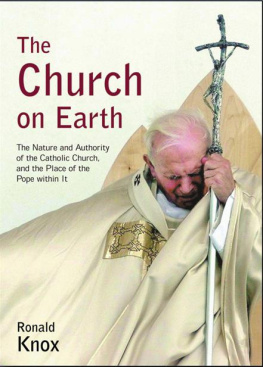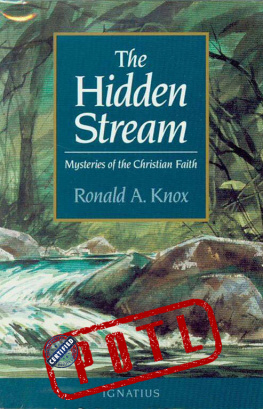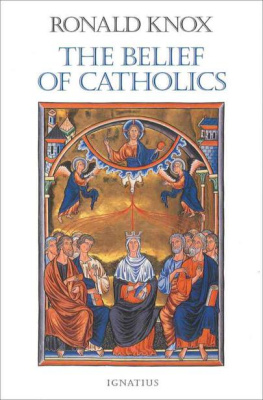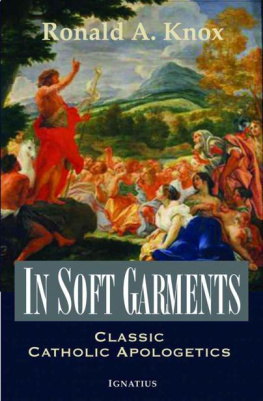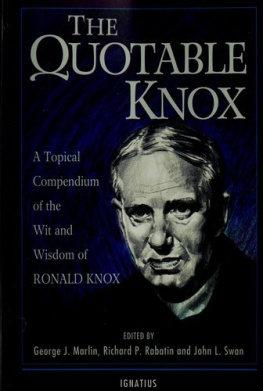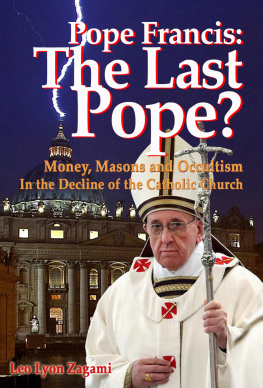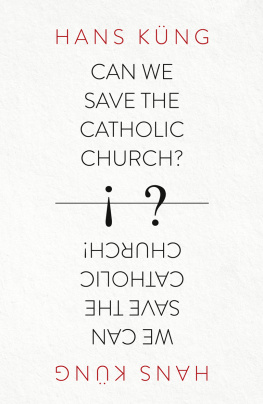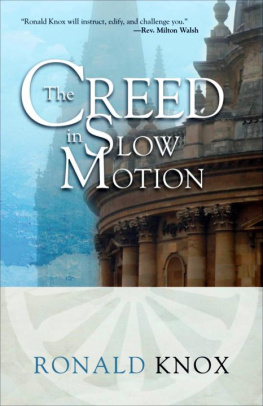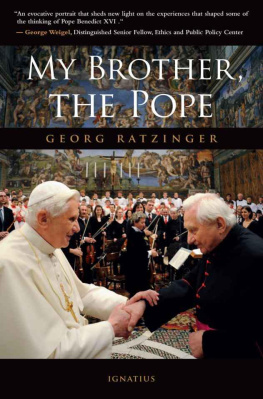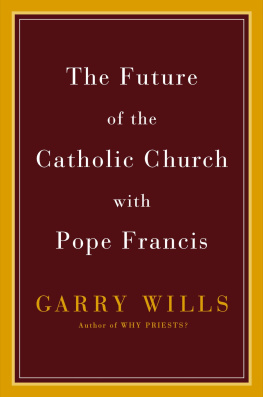The Church on Earth
Ronald A. Knox
SOPHIA INSTITUTE PRESS
Manchester, New Hampshire
The Church on Earth was originally published by Burns, Oates, and Washbourne Ltd. (London, 1929). This 2003 edition by Sophia Institute Press contains minor editorial revisions to the original text.
Copyright 2003 Sophia Institute Press
Printed in the United States of America
All rights reserved
No part of this book may be reproduced, stored in a retrieval system, or transmitted in any form, or by any means, electronic, mechanical, photocopying, or otherwise, without the prior written permission of the publisher, except by a reviewer, who may quote brief passages in a review.
Sophia Institute Press
Box 5284, Manchester, NH 03108
1-800-888-9344
www.SophiaInstitute.com
Nihil obstat:
Thomas McLaughlin, S.T.D.,
Censor deputatus
Imprimatur:
Edm. Can. Surmont,
Vicarius generalis
Westminster,
December 3, 1928
Library of Congress Cataloging-in-Publication Data Knox, Ronald Arbuthnott, 1888-1957. The church on earth / Ronald A. Knox.
p. cm.ISBN 1-928832-83-0 (pbk.)1. Catholic Church. I. Title. BX1751.3.K64 2003 262.02 dc212003001372
Part One
The nature of the Church
Chapter One
The Church is a visible society
T he Catholic Church defines herself as a visible society. The appropriateness of the term is not immediately obvious. It might be objected, for example, that all societies are visible insofar as their members can be seen so many individuals of the human species and that no society could be visible in any other sense. The meaning of the phrase is made clearer if we say that the Church is visibly a society; that it is a body which acts corporately and that its capacity for doing so is manifested by the effect of those actions upon history.
But perhaps the simplest way of elucidating this point is to take instances from ordinary life. It would be perfectly intelligible to talk of all the Old Etonians in the world as constituting a single society. The number of them is exactly defined: you are an Old Etonian, or you are not. Old Etonians are all bound together, however vaguely, by common memories, a common tradition, and common loyalties. But they do not constitute a visible society; they have no principle of cohesion that enables them to act as a single body, nor have they any mutual relations with one another only a common relation to their old school. But a body exists, known as the Old Etonian Association, which is a visible society. Its members, besides being alumni of the same school, form a corporate body; they have common rules, common rights, and a common principle of cohesion (in this case, an elected committee). The association can act as a body, can hold property under a legal title, and so on. Old Etonians is a name that describes merely a collection of persons. The Old Etonian Association describes a body of persons.
The Protestant theory of the Church, when Protestantism had a coherent theology, represented the Church as merely a collection of people. Individual bodies there might be the Presbyterians, the Brownists, the Baptists, and so on each of which had a legal corporate existence. But the Church was neither any one of these nor the whole conglomeration of these; it was simply the total muster, known only to God, of those names which were inscribed in the Book of Life. There was no question of salvation in or through the Church; you were a member of the Church precisely because you were being saved.
Membership of such a Church involved no mutual relations, but only a common personal relation to our Lord Jesus Christ. Members of any sect, however strict, who were not actually predestined to eternal life were not to be regarded as members of the Church in any sense at all. Conversely, those who were predestined to eternal life could attain it without membership (even in desire) of any visible society whatsoever.
Catholic theology, in contrast to all this, represents membership (at least in desire) of a visible Church as the indispensable means to salvation; man finds himself, for supernatural purposes, not as a lonely unit, but as a member of a body corporate. The Church, then, in Catholic theory, is a visible society; like other visible societies, it will have its rights, its duties, its ascertainable figures of membership, and its center of cohesion. Its members will be in mutual relation, partly by means of a common life and partly by means of subordination. The Church will, moreover, act as a whole; it will have its defined interactions with the world outside it. It will be a body, not a mere group.
Infinitely the most important among these relations is its corporate relation to the Person of our Lord Jesus Christ. But in these pages, our attention will be confined to the Church on earth to its organization considered as one of the many organizations under which, in our present experience, our fellowmen are grouped.
It must be remembered, however, that this division of the subject is adopted only for thee of systematic arrangement. It is not to be supposed that there are two Churches of Christ: one an external, workaday fact, with laws, constitutions, etc., and the other a supernatural entity, Christs glorious Bride, an ideal society in Heaven. There is but one Church, seen in Heaven as the totality of humankind redeemed, seen on earth as an organization that struggles, suffers, has enemies, and (so far as its members, even the highest of them, are human) has faults.
When Aristotle said that man is a political animal, he did not mean that man has a natural craving for registering votes, for frequenting assemblies, and for making public speeches. He meant that man is by nature clubable that it is his instinct to form groups, not (like the animals) for merely practical purposes, but as the condition of realizing himself. Just as the institutions of Christianity prayer, worship, sacraments, sacrifice, etc. have their dim analogue in the religions that man, fallen and unilluminated, invents for himself, so the Catholic Church itself is the full satisfaction of that instinct for solidarity which inspires man even in his primitive state.
If our Lord Jesus Christ had merely left behind Him a school of philosophy, whose influence was to leaven the mass of human thought, He would not have provided an outlet for that sentiment of loyalty toward the group which is characteristic of the human genius. The instinct that bade the three hundred Spartans at Thermopylae to fight to the last, in obedience to the holy laws of their country, the instinct that encouraged Japanese subjects to commit suicide by way of celebrating an event in the life of the royal family, would have in that case no echo and no analogy in the perfect world-system.
Almighty God, who disposes the natural and the supernatural orders in correspondence with each other, did not see fit to leave His new creation warped and one-sided. The religion He revealed to us was from the first indissolubly associated with the formation of a new religious group, which was to have higher claims upon our loyalty than country, party, and even the family itself.
Yet the Church, like the other institutions of Christianity, was foreshadowed under the old Jewish dispensation, lest the world should be unprepared for it. The word itself is borrowed from the terminology of the Hebrew religion. The Ecclesia or Assembly of God was, under the old covenant, conterminous with a single nation, the people of the Jews. Patriotism itself, for this one people, was transmuted into a higher obligation by the unique relation in which that people stood to the one true God. This one people had been called out among all the nations of the earth; as God Himself was unique, it was His unique assembly. It was as a participant in the rights of that assembly that the Jew claimed what he claimed, hoped what he hoped; his citizenship was his churchmanship. And it was this Church-nation that served, in Gods providence, as the rough model for the Christian assembly that followed and superseded it.
Next page
